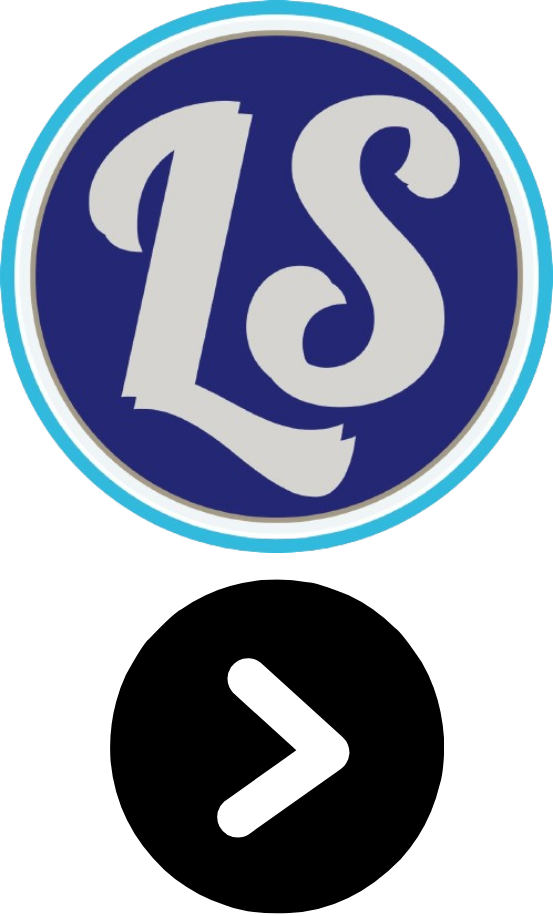| Non-Rationalised Science NCERT Notes and Solutions (Class 6th to 10th) | ||||||||||||||
|---|---|---|---|---|---|---|---|---|---|---|---|---|---|---|
| 6th | 7th | 8th | 9th | 10th | ||||||||||
| Non-Rationalised Science NCERT Notes and Solutions (Class 11th) | ||||||||||||||
| Physics | Chemistry | Biology | ||||||||||||
| Non-Rationalised Science NCERT Notes and Solutions (Class 12th) | ||||||||||||||
| Physics | Chemistry | Biology | ||||||||||||
Chapter 18 Wastewater Story
We use water extensively in our homes and generate large quantities of **wastewater**. This wastewater is dirty, containing soap lather, oil, grease, human waste, and other pollutants from sinks, showers, toilets, and laundries. Instead of being wasted, this used water needs to be cleaned by removing pollutants before it can be safely discharged or reused.
Water, Our Lifeline
**Clean water** is fundamental for human life and dignity. It is used for numerous purposes:
Unfortunately, access to clean water is not universal. Millions of people worldwide lack safe drinking water, leading to widespread water-related diseases and deaths. In many regions, people, including children, have to travel long distances to collect water.
Activity 16.1
Collecting and discussing news reports and pictures related to water shortage highlights the severity of the problem globally and the hardships faced by affected populations, emphasizing the need for action.
As discussed in Chapter 16, freshwater scarcity is increasing due to factors like population growth, pollution, industrial development, and poor management. Recognizing this urgency, the United Nations proclaimed 2005–2015 as the International Decade for Action on "Water for Life," aiming to reduce the number of people without access to safe drinking water.
Cleaning wastewater before it enters natural water bodies or is reused is essential. This process, commonly known as **Sewage Treatment**, involves removing pollutants through various stages.
What Is Sewage?
**Sewage** is the liquid waste generated and released by households, industries, hospitals, offices, and other establishments. It also includes rainwater runoff from streets, carrying pollutants like dirt, chemicals, and waste.
Sewage is a complex mixture, mostly water, containing dissolved and suspended impurities:
- **Organic impurities:** Human faeces, animal waste, oil, urea (from urine), pesticides, herbicides, fruit and vegetable waste, etc.
- **Inorganic impurities:** Nitrates, Phosphates, metals.
- **Nutrients:** Primarily Phosphorus and Nitrogen, which can cause excessive algal growth in water bodies.
- **Bacteria:** Disease-causing bacteria (pathogens) like *Vibrio cholera* (causes cholera) and *Salmonella typhi* (causes typhoid).
- **Other Microbes:** Protozoa that can cause diseases like dysentery.
Untreated sewage is a significant source of pollution and health hazards.
Activity 18.2
Inspecting open drains and recording observations about the colour, odour, and visible contaminants of the wastewater flowing through them provides a direct view of the composition and unpleasant nature of sewage before treatment.
Table 18.1: Contaminant survey (Example Structure):
| S. No. | Type of sewage | Point of origin | Contaminants (based on observation) | Any other remark (e.g., presence of insects, smell) |
|---|---|---|---|---|
| 1. | Sullage water | Kitchen sink, bath/shower | Soap, oil, food particles | Greasy, might have mild smell |
| 2. | Foul waste | Toilets | Faeces, urine, toilet paper | Dark colour, strong foul odour |
| 3. | Trade waste | Industrial/Commercial areas | Varies (chemicals, dyes, oils, etc.) | Colourful, strong chemical smell, may contain debris |
Water Freshens Up — An Eventful Journey
In urban areas, wastewater flows through a network of pipes called **sewers**, forming the **sewerage** system. This system transports sewage from its source to a treatment plant. **Manholes** are access points in the sewerage system, located at intervals (50-60m), junctions, or changes in direction.
Activity 18.3
Mapping the sewage route in a building, counting manholes, and observing life forms around open drains (if present) helps understand the infrastructure for wastewater collection and the unhygienic conditions associated with untreated sewage.
Treatment of Polluted Water:
Wastewater undergoes treatment to remove pollutants. This process is carried out at a **Wastewater Treatment Plant (WWTP)**.
Activity 18.4
This activity simulates the stages of wastewater treatment on a small scale. Steps include:
- Adding organic matter, detergent, and colour to water in a jar to create simulated wastewater.
- Allowing the mixture to sit (simulating initial settling).
- **Aeration:** Bubbling air through the mixture (or stirring) to provide oxygen, promoting the growth of aerobic bacteria that break down organic pollutants.
- **Filtration:** Passing the aerated liquid through a filter made of layers of sand and gravel to remove suspended solids. (An actual plant uses deeper sand filters).
- **Chlorination:** Adding a small piece of a chlorine tablet to the filtered liquid to disinfect it by killing harmful bacteria. (Ozone is another disinfectant used).
Observations at each stage (smell, appearance, removal of particles, effect of chlorine) demonstrate the effectiveness of different treatment processes in purifying wastewater. (Note: Chlorine has a distinct odour).
Wastewater Treatment Plant (Wwtp)
Wastewater treatment plants (WWTPs) use a combination of physical, chemical, and biological processes to remove contaminants from wastewater.
Stages of treatment at a WWTP:
- **Screening:** Wastewater passes through **bar screens** to remove large debris like rags, sticks, plastic packets, etc.
- **Grit and Sand Removal:** Water flows into a tank where the speed is reduced, allowing heavier solids like sand, grit, and pebbles to settle down.
- **Sedimentation/Clarification:** Water enters a large tank where lighter solids (like faeces) settle as **sludge** at the bottom (removed by a scraper) and floatable solids (like oil and grease) are removed by a skimmer. The cleared water is called **clarified water**.
The settled sludge is transferred to a separate tank where it is decomposed by **anaerobic bacteria** (bacteria that don't require oxygen). This process produces **biogas**, which can be used as fuel or for electricity generation.
- **Aeration:** Air is pumped into the clarified water in an aeration tank. This encourages the growth of **aerobic bacteria** (bacteria that require oxygen). These bacteria consume and break down the remaining organic pollutants, human waste, food waste, etc.
After aeration, the suspended aerobic bacteria settle at the bottom as **activated sludge**. The treated water is then removed from the top.
The activated sludge, mostly water, is dried (using sand beds or machines). The dried sludge can be used as **manure**, returning valuable organic matter and nutrients to the soil.
The treated water, with a low level of pollutants, is discharged into natural water bodies (sea, river) or into the ground. Further natural processes help purify it. Sometimes, disinfection (using chemicals like chlorine or ozone) is done before discharge or reuse.
Eucalyptus Trees and Wastewater: Planting eucalyptus trees near sewage ponds is suggested because these trees absorb excess wastewater rapidly and release pure water vapour through transpiration, helping to purify the surrounding air and manage surplus water.
Rivers can also naturally clean water through similar processes of filtration, sedimentation, and biological action.
Better Housekeeping Practices
Minimising the amount and type of waste released down the drain is a crucial step in better wastewater management. This reduces the load on WWTPs and helps prevent blockages and pollution.
Good housekeeping practices include:
- Avoiding pouring **cooking oil and fats** down the drain, as they can solidify and block pipes. They should be disposed of in the dustbin. Fats also clog soil pores in open drains.
- Disposing of solid waste like **used tealeaves, food remains, cotton, sanitary towels** in the dustbin, not the sink. These items can choke drains, obstruct water flow, and hinder the natural degradation processes by reducing oxygen availability.
- Avoiding pouring **chemicals** like paints, solvents, insecticides, motor oil, and some medicines down the drain, as they can kill the beneficial microbes involved in water purification at the WWTP.
Sanitation And Disease
**Poor sanitation** and exposure to **contaminated drinking water** are major causes of many diseases. Lack of proper sewage disposal facilities, especially in areas where open defecation is common, leads to pollution of both surface water bodies (rivers, ponds) and groundwater (wells, hand pumps, springs).
Contaminated water can spread **waterborne diseases** rapidly. Examples of diseases linked to poor sanitation and contaminated water include cholera, typhoid, polio, meningitis, hepatitis, and dysentery.
Untreated human excreta contains harmful bacteria and other microbes that can easily contaminate water sources, posing a severe public health hazard.
Alternative Arrangement For Sewage Disposal
In areas lacking access to conventional sewerage systems, low-cost, on-site sewage disposal methods are promoted to improve sanitation and reduce health risks.
Examples of alternative systems include:
- **Septic tanks:** Suitable for individual buildings, hospitals, or small clusters of houses. They collect sewage and allow initial settling and anaerobic decomposition.
- **Chemical toilets:** Portable toilets that use chemicals to treat waste.
- **Composting pits:** Used for treating waste through decomposition, often combined with other organic matter.
Some technologies involve human waste flowing through covered drains to a **biogas plant**, where decomposition by bacteria produces biogas (a source of energy).
A design for a **vermi-processing toilet** utilizes earthworms to treat human excreta, converting it into vermi cakes (manure). This system is simple, hygienic, and requires minimal water.
The "Swachh Bharat" mission in India aims to achieve proper sewage disposal, provide toilets for everyone, and promote cleanliness across the country.
Sanitation At Public Places
Public places like railway stations, bus depots, airports, hospitals, and fairgrounds are used by large numbers of people and generate considerable waste. Proper waste disposal and sanitation are crucial in these places to prevent the spread of diseases.
Government standards for sanitation exist, but adherence is sometimes lacking. However, individuals can contribute by using designated dustbins and avoiding littering. If no dustbin is available, carrying the waste until a disposal point is found helps maintain cleanliness.
Maintaining a clean and healthy environment requires collective effort. Adopting good sanitation practices as a way of life and actively participating in maintaining water sources and public cleanliness are responsibilities we all share. Collective action has significant power in achieving better sanitation and public health.
Exercises
Question 1. Fill in the blanks:
(a) Cleaning of water is a process of removing ____________.
(b) Wastewater released by houses is called ____________.
(c) Dried ____________ is used as manure.
(d) Drains get blocked by ____________ and ____________.
Answer:
Question 2. What is sewage? Explain why it is harmful to discharge untreated sewage into rivers or seas.
Answer:
Question 3. Why should oils and fats be not released in the drain? Explain.
Answer:
Question 4. Describe the steps involved in getting clarified water from wastewater.
Answer:
Question 5. What is sludge? Explain how it is treated.
Answer:
Question 6. Untreated human excreta is a health hazard. Explain.
Answer:
Question 7. Name two chemicals used to disinfect water.
Answer:
Question 8. Explain the function of bar screens in a wastewater treatment plant.
Answer:
Question 9. Explain the relationship between sanitation and disease.
Answer:
Question 10. Outline your role as an active citizen in relation to sanitation.
Answer:
Question 11. Here is a crossword puzzle: Good luck!
Across
3. Liquid waste products
4. Solid waste extracted in sewage treatment
6. A word related to hygiene
8. Waste matter discharged from human body
Down
1. Used water
2. A pipe carrying sewage
5. Micro-organisms which causes cholera
7. A chemical to disinfect water
Answer:
Question 12. Study the following statements about ozone:
(a) It is essential for breathing of living organisms.
(b) It is used to disinfect water.
(c) It absorbs ultraviolet rays.
(d) Its proportion in air is about 3%.
Which of these statements are correct?
(i) (a), (b) and (c)
(ii) (b) and (c)
(iii) (a) and (d)
(iv) All four
Answer:

